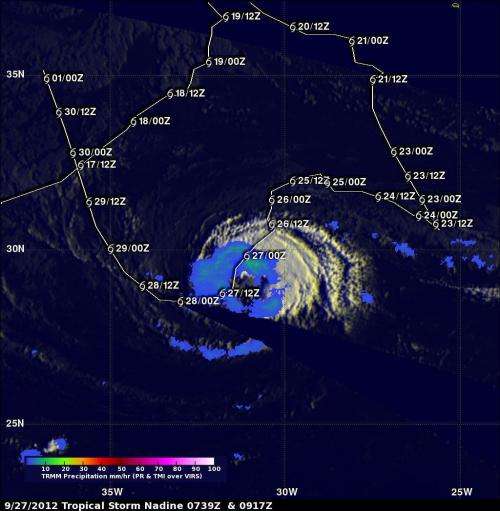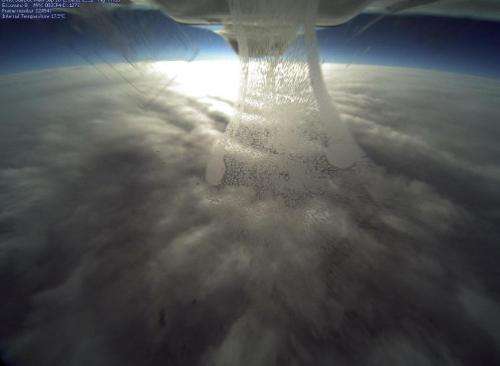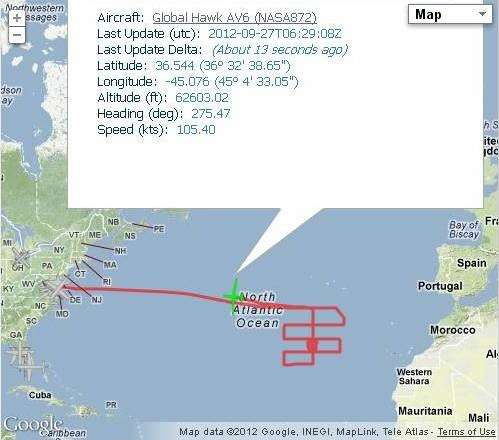TRMM satellite sees light rainfall in Tropical Storm Nadine

NASA's TRMM satellite noticed that the intensity of rainfall in Tropical Storm Nadine has diminished today, Sept. 27.
The Tropical Rainfall Measuring Mission or TRMM satellite passed over Tropical Storm Nadine on Sept. 27 at 0739 UTC (4:39 a.m. EDT) and at 0917 UTC (5:17 a.m. EDT). At NASA's Goddard Space Flight Center in Greenbelt, Md., several TRMM instruments were used to create a full picture of Nadine's weakened rainfall. The image was created with an enhanced infrared image from TRMM's Visible and InfraRed Scanner (VIRS) overlaid with rainfall data derived from TRMM's Microwave Imager (TMI) instrument. The rainfall image showed Nadine had light rainfall almost surrounding the center of circulation. The heaviest intensity of about 20mm/hour (~.8 inches) appears to be located just northeast of the center.

NASA's Hurricane and Severe Storms Sentinel or HS3 mission sent out the unmanned Global Hawk aircraft to investigate Tropical Storm Nadine again on Sept. 26 and it returned to NASA's Wallops Flight Facility in Wallops Island, Va. on Sept. 27. While over Tropical Storm Nadine, the Global Hawk captured data using instruments aboard and also dropping sensors called sondes into the storm. The dropsonde system ejected the small sensors tied to parachutes that drift down through the storm measuring winds, temperature and humidity.

At 11 a.m. on Sept. 27. Tropical Storm Nadine had maximum sustained winds near 60 mph (95 kmh) and some strengthening is possible, according to the National Hurricane Center. It is located near latitude 28.7 north and longitude 32.4 west. Nadine is moving toward the west-southwest near 7 mph (11 kmh) and is expected to turn west then northwest as it moves around a high pressure area.
Tropical Storm Nadine has now been meandering around within the Atlantic Ocean for sixteen days.
Provided by NASA's Goddard Space Flight Center




















